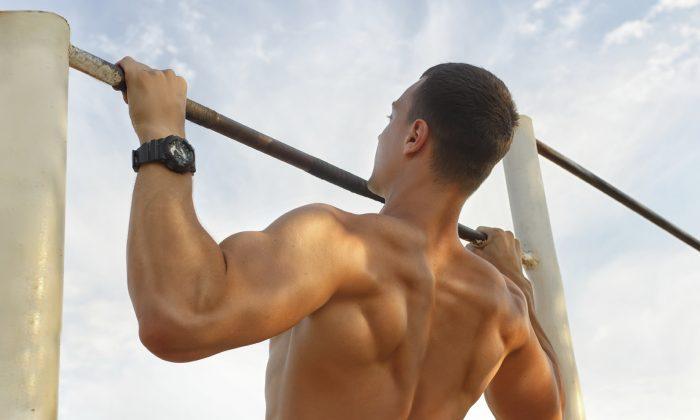Exercise is a key component of a healthy lifestyle, but exercising incorrectly can lead to injury—a fate many have experienced. Being sidelined for days, weeks, or longer can set you back a great deal, not to mention result in costly rehab.
To avoid this, it’s worth being aware of which exercises are well-known for causing injury when done incorrectly, and to avoid them unless or until you’ve found a qualified fitness expert who can teach you how to do them properly.
CNN recently highlighted 10 exercises known by physical therapists as being high-risk. Done properly, these exercises are actually really beneficial. You just need to be careful, and learn them under the supervision of a knowledgeable coach.
One exception is the seated leg extension, which I recommend avoiding altogether as it’s just not a valuable exercise. The two best exercises for you are the Kettlebell swing and the deadlift—provided they’re done correctly, with proper form supervised by a trained professional.
One important factor that places you at an increased risk of athletic injury is your joint mobility. As physical therapist Alison McGinnis tells CNN:
“If you don’t have enough mobility at each joint to perform an exercise safely, then really any part of the body is at risk for injury.”
So what are some of the exercises that, when done incorrectly, are most likely to reward with injury rather than fitness?
The following are among the riskiest moves, according to six physical therapists who work with sports injuries, along with some additional ones I recommend you either avoid or take precautions with.

1. Crunches: Bicycle-Style and Regular
When doing a bicycle crunch, maintaining a solid core is key for avoiding lower back problems. High speed twisting motions like this can easily lead not only to muscle spasm, but also disc herniation.
Cervical spine injuries are also common among those who crane their necks back and forth at high speeds. To avoid injury, slow down the movement, and keep your abdominals flexed.
Regular crunches can also lead to lower back and spine injuries, including herniation, as it places excessive pressure on the anterior portion of your spine, which pulls on your lumbar vertebrae.
To do a crunch properly:
- Lie on your back with your feet against a wall (so your knees and hips are bent at a 90-degree angle)
- Tighten your abdominal muscles and raise your head and shoulders off the floor
- Try crossing your arms on your chest instead of behind your head (to avoid straining your neck)
- Hold for about three deep breaths, lower to the ground, and repeat
2. Behind the Head Exercises: Lat Pull-Downs, and Shoulder Presses
Note that the key here is pulling the bar behind your head. The bar should be pulled to your upper chest, not behind your neck, to avoid injury.
As noted by physical therapist Jessica Malpelli: “The lat pull-down places a lot of stress on the anterior joint capsule of the shoulder and can eventually lead to impingement or even rotator cuff tears.”
Anytime you raise or pull a weight down behind your neck or head, you’re forcing your shoulders into an abnormal plane of motion with regards to the movement of your shoulder joints, thereby dramatically raising your risk for injury.
Behind the neck shoulder presses is therefore another high-risk exercise that can overload your shoulders. “No pain, no gain” does NOT apply when it comes to forcing your joints into unnatural positions, or positions that exceed your mobility.
A safer approach is doing the lat pull-down in front of your face. As for behind the neck shoulder presses, you’re better off doing seated rows, or exercises designed to improve shoulder mobility and stability, such as working with elastic resistance bands or a medicine ball.

3. The Kettlebell Swing
The kettlebell swing is a phenomenal strength-building exercise. It’s one of my favorites and one I regularly do. However, proper form and technique is essential for avoiding injury. One key consideration to remember is that you’re not using your arms to lift or swing the kettlebell.
The power of the movement comes from your lower body, specifically your glutes and hamstrings. Using your arms to move the kettlebell can damage your rotator cuff, and raises your risk for other shoulder injuries.
Kettlebell routines throw off your center of gravity, forcing you to use multiple muscle groups, including your core, to maintain your balance. This is part of why it’s such an effective whole-body exercise.
However, I recommend spending some time with a personal trainer (ideally kettlebell certified) for coaching, or by enrolling in a beginner group class to learn the proper techniques.
Some key points to remember when doing the kettlebell swing is to focus on the motion of your lower body. As you swing the kettlebell forward, engage your hips. Thrusting your hips forward allows your arms to naturally move away from your body without using your arms to “lift” the weight. The power to swing the kettlebell comes from thrusting your hips forward.
4. Bent Over Rows
There’s plenty of room for error with this exercise. As noted by Malpelli: “[O]ften patients perform them bent over at the waist. Being in that much lumbar spine flexion can cause a disc to displace posteriorly, potentially hitting a nerve.” A safer way to do them is to lie face down on a large exercise ball or bench, rather than just lurching forward, bending at the waist. You also want to avoid rolling your shoulders forward.
5. Deadlifts
When done right, deadlifts are a great full-body exercise. When done incorrectly, they’re a recipe for lumbar injuries and muscle spasms. Since you’re lifting heavy weights, typically far more than your body weight, proper form and warm up are critical for avoiding injury. One of the most severe risks is herniating a disc in your spine, which can have painful and costly long-term ramifications.
Key considerations include maintaining good posture and a neutral spine, and avoiding using your back to lift the weight. Snapping your arms to lift the bar, lifting with a rounded back, and/or failing to engage your core are other common mistakes.
A strong core is also important. If your core is weak, you have little chance of performing a deadlift correctly, so you’re better off doing other, safer core exercises before attempting deadlifts.That said, it’s one of my favorite strength exercises and at 61, I’m able to deadlift 325 pounds for six reps, which you can see in the video above that I recorded with my trainer earlier this week.
To perform the deadlift correctly, be sure to engage your lats and abdominals. The movement requires you to hinge at the hips, contracting your glutes and extending your hips. To practice the movement before getting started, follow exercise physiologist Heather Milton’s2 suggestion: Do the following hip-hinge exercise, without weights:
- Stand about six inches from a wall, back toward the wall
- With your spine straight, hinge your hips backward, as if you’re about to sit down in a chair
- Lightly tap your behind against the wall, and then hinge your hips back to upright position. Be sure to engage your glutes and extend your hips
6. Overhead Squat
Like the deadlift, the overhead squat is a challenging whole-body exercise that has many benefits, provided it’s done right. Lifting a significant amount of weight is often challenging enough; adding a squat can really throw off your form. Lack of mobility in your hips, knees and ankles can make matters even worse. Besides straining those areas, the overhead press also strains your shoulders and back.
McGinnis offers the following suggestion: “Stop when your low back starts to arch excessively, your knees drive forward past your toes or your arms move forward. Whatever depth that is, that is the bottom of your squat.” Going past this point will compromise your form, and heighten your risk of shoulder, cervical, thoracic, and/or lumbar injury.
A safer exercise, and one that requires less mobility to perform correctly is the behind the neck squat. In the above video I shot last week, I’m squatting with 145 pounds, which isn’t really heavy but I am able to squat deeply and keep my chest out. This type of exercise is one of the best and, like the deadlift, among the most effective exercises for increasing overall body strength. It serves to increase growth factors that also stimulate muscles in your entire body that you did not work out.
7. Backward Medicine Ball Rotation Tosses
A weighted ball, aka medicine ball, is an inexpensive addition to any home gym, and is great for adding resistance to your abdominal workout. They can also add variety to a number of other exercises. Some caution is warranted however, and as noted in the featured article, forcefully rotating your spine backward—especially with a weight—is a recipe for a herniated disc, or two. Anytime you’re bending or rotating backward, the movement should be done slowly, and with great control. A far safer option is to do lateral, forward-moving medicine ball throws, to boost power.







Friends Read Free